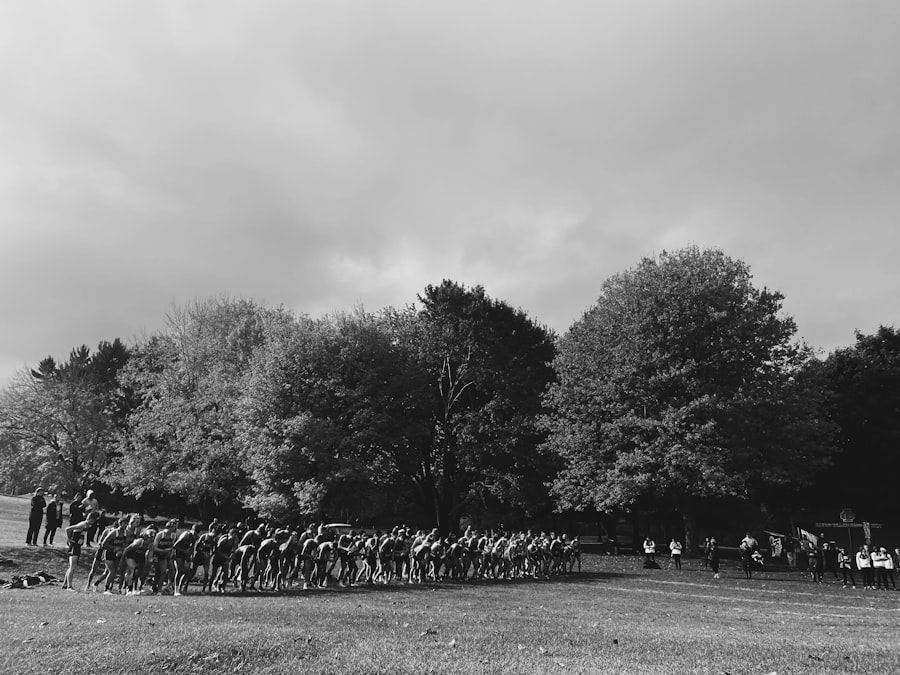Long-range warfare has its roots in the earliest days of human conflict, where the need to strike an enemy from a distance became paramount for survival. Primitive societies relied on rudimentary tools and weapons, such as thrown stones and spears, to engage adversaries without direct confrontation. These early forms of long-range engagement were not only about inflicting damage but also about psychological warfare, as the ability to attack from afar instilled fear and uncertainty in opponents.
The concept of distance in warfare began to take shape as tribes recognized the advantages of striking before an enemy could retaliate. As civilizations progressed, so did their understanding of long-range tactics. The invention of the bow and arrow marked a significant turning point in early warfare.
This weapon allowed archers to engage foes from a considerable distance, providing a tactical edge that could determine the outcome of battles.
The early origins of long-range warfare laid the groundwork for more sophisticated weaponry and tactics that would evolve over centuries.
Key Takeaways
- Long-range warfare has early origins in ancient civilizations, where long-range weapons like bows and arrows were used in combat.
- The evolution of long-range weapons has seen advancements from traditional bows and arrows to modern firearms and missiles, increasing the range and impact of warfare.
- Long-range warfare has played a significant role in ancient civilizations and medieval times, shaping the outcomes of battles and wars.
- The impact of long-range warfare on modern battlefields has been profound, with the use of advanced technology and precision-guided weapons changing the dynamics of warfare.
- The future of long-range warfare is likely to be influenced by further advancements in technology, raising ethical and moral considerations about the use of such weapons in conflicts.
The Evolution of Long-range Weapons
The evolution of long-range weapons is a testament to humanity’s ingenuity and relentless pursuit of efficiency in warfare. Following the bow and arrow, advancements in technology led to the development of crossbows, which offered greater power and accuracy. Crossbows allowed soldiers to penetrate armor that was previously impervious to arrows, thus changing the landscape of battlefields.
This evolution did not stop there; the introduction of gunpowder in the late medieval period heralded a new era in long-range weaponry. With the advent of firearms, the nature of long-range combat transformed dramatically. Muskets and cannons became staples on the battlefield, enabling armies to engage enemies from even greater distances.
The precision and lethality of these weapons necessitated new tactics and formations, as commanders had to adapt to the changing dynamics of warfare. The evolution of long-range weapons not only increased the scale and scope of conflicts but also influenced political landscapes, as nations sought to develop superior arsenals to maintain power and control.
Long-range Warfare in Ancient Civilizations

In ancient civilizations, long-range warfare played a crucial role in shaping empires and determining territorial boundaries. The Assyrians, for instance, were known for their use of archers who could rain arrows down upon their enemies from elevated positions, effectively decimating opposing forces before they could engage in close combat. Similarly, the Greeks utilized their phalanx formations alongside skilled archers to dominate their adversaries, demonstrating how long-range tactics could complement traditional infantry strategies.
The Romans further advanced long-range warfare with their use of siege engines and artillery. These innovations allowed them to breach fortified cities from a distance, showcasing the strategic importance of long-range capabilities in ancient military campaigns. The Roman legions employed catapults and ballistae to hurl projectiles at enemy fortifications, effectively changing the course of sieges and battles alike.
Long-range warfare in ancient civilizations not only facilitated territorial expansion but also laid the foundation for military doctrines that would influence future generations.
Long-range Warfare in Medieval Times
| Weapon | Range | Accuracy |
|---|---|---|
| Longbow | 200-250 yards | High |
| Crossbow | 200-300 yards | Moderate |
| Trebuchet | 300-400 yards | Low |
The medieval period witnessed significant developments in long-range warfare, particularly with the rise of feudalism and the establishment of powerful kingdoms. The introduction of the longbow by the English during this era revolutionized combat. English archers, particularly during battles such as Agincourt, demonstrated the devastating effectiveness of massed longbow fire against heavily armored knights.
This shift underscored the importance of ranged units in medieval armies and marked a departure from traditional melee-centric combat. Additionally, the use of gunpowder began to emerge during medieval times, leading to the creation of early cannons and handguns. These innovations not only changed how battles were fought but also influenced castle designs, as fortifications had to adapt to withstand cannon fire.
The interplay between long-range weaponry and defensive structures highlighted a continuous arms race between offense and defense that characterized medieval warfare. Long-range tactics became integral to military strategy, shaping how battles were planned and executed.
The Impact of Long-range Warfare on Modern Battlefields
In modern warfare, long-range capabilities have become increasingly sophisticated and integral to military strategy. The introduction of precision-guided munitions has transformed how conflicts are conducted, allowing for targeted strikes that minimize collateral damage while maximizing effectiveness. This shift has redefined the battlefield, where engagements can occur at distances previously unimaginable, often without direct line-of-sight.
Moreover, modern technology has enabled real-time intelligence gathering through drones and satellite surveillance, allowing commanders to make informed decisions about when and where to deploy long-range assets. The impact of long-range warfare on contemporary battlefields is profound; it has shifted the focus from large-scale troop movements to strategic strikes that can decisively alter the course of conflicts with minimal risk to personnel. As nations continue to invest in advanced weaponry, the dynamics of warfare will likely evolve further, emphasizing the importance of long-range capabilities.
The Role of Long-range Warfare in Naval Battles

Long-range warfare has also played a pivotal role in naval engagements throughout history. From ancient galleys equipped with archers to modern aircraft carriers launching precision strikes from hundreds of miles away, naval warfare has consistently relied on the ability to engage enemies from a distance. The introduction of cannons on ships during the Age of Sail marked a significant evolution in naval tactics, allowing vessels to bombard enemy ships before they could close in for boarding actions.
In contemporary naval warfare, missile technology has revolutionized how fleets operate. Guided missiles can be launched from submarines or surface ships, striking targets far beyond visual range. This capability has shifted naval strategy towards deterrence and power projection, as nations seek to assert dominance over vast maritime territories without direct confrontation.
The role of long-range warfare in naval battles underscores its significance in shaping maritime power dynamics and influencing geopolitical relations.
Long-range Warfare in the Age of Gunpowder
The Age of Gunpowder marked a transformative period in military history, characterized by the widespread adoption of firearms and artillery on battlefields across Europe and beyond. This era saw the emergence of powerful cannons capable of devastating enemy fortifications from great distances. The ability to breach walls with artillery changed siege warfare fundamentally, allowing armies to conquer cities that had previously been deemed impregnable.
Furthermore, gunpowder weapons led to new tactical formations and strategies as commanders adapted to the realities of ranged combat. The linear tactics employed by armies during this period emphasized firepower over traditional melee engagements, showcasing how long-range capabilities could dictate battlefield outcomes. The Age of Gunpowder not only redefined military engagements but also influenced political landscapes as nations sought to harness these advancements for territorial expansion and dominance.
Long-range Warfare in the 20th Century
The 20th century witnessed unprecedented advancements in long-range warfare technology, particularly during both World Wars. The introduction of tanks, aircraft, and advanced artillery systems transformed how conflicts were fought on land and in the air. World War I saw the use of artillery barrages that could devastate enemy positions before infantry advances commenced, highlighting the importance of long-range fire support in trench warfare.
World War II further escalated these developments with innovations such as strategic bombers capable of delivering payloads over vast distances. The bombing campaigns conducted by both Allied and Axis forces demonstrated how long-range strikes could cripple enemy infrastructure and morale. Additionally, missile technology began to emerge towards the end of this period, setting the stage for future conflicts where precision strikes would become commonplace.
The Influence of Technology on Long-range Warfare
Technology has been a driving force behind the evolution of long-range warfare throughout history. From the development of gunpowder weapons to modern precision-guided munitions, advancements have continually reshaped how conflicts are conducted. The integration of information technology into military operations has further enhanced situational awareness and decision-making capabilities for commanders on the battlefield.
In recent years, innovations such as drones have revolutionized reconnaissance and strike capabilities, allowing for real-time intelligence gathering and targeted attacks without risking personnel on the ground. As technology continues to advance at an unprecedented pace, it is likely that future iterations of long-range warfare will incorporate artificial intelligence and autonomous systems, fundamentally altering how wars are fought and won.
The Ethical and Moral Considerations of Long-range Warfare
The rise of long-range warfare has raised significant ethical and moral considerations that cannot be overlooked. As technology enables strikes from great distances with minimal risk to personnel, questions arise regarding accountability and collateral damage. The ability to conduct warfare remotely can desensitize operators to the consequences of their actions, leading to debates about the morality of such engagements.
Moreover, the potential for civilian casualties in precision strikes poses ethical dilemmas for military leaders and policymakers alike. Balancing military objectives with humanitarian concerns is an ongoing challenge that requires careful consideration as nations navigate the complexities of modern warfare. As long-range capabilities continue to evolve, addressing these ethical implications will be crucial in shaping future military doctrines.
The Future of Long-range Warfare
Looking ahead, the future of long-range warfare is poised for further transformation driven by technological advancements and shifting geopolitical landscapes. Emerging technologies such as hypersonic missiles promise unprecedented speed and accuracy in strikes, potentially altering strategic calculations for nations worldwide.
As nations continue to invest in research and development for long-range capabilities, it is essential for military leaders and policymakers to consider not only the tactical advantages but also the ethical implications associated with these advancements. The future landscape of warfare will likely be defined by a delicate balance between leveraging technological superiority while adhering to principles that prioritize human life and dignity amidst conflict.
Throughout military history, the concept of distance has often been utilized as a strategic weapon, influencing the outcomes of numerous conflicts. From the use of long-range artillery to the deployment of missiles, controlling distance has allowed militaries to strike from afar, minimizing their own casualties while maximizing the impact on the enemy. An interesting exploration of this topic can be found in an article on MyGeoQuest, which delves into the various ways distance has been leveraged in warfare. For more insights, you can read the related article by visiting this page.
WATCH THIS! The Hidden Reason No One Can Invade America | A Geographical Analysis
FAQs
What is distance as a weapon in military history?
Distance as a weapon in military history refers to the use of long-range weapons, such as artillery, missiles, and aircraft, to attack enemy targets from a distance. This strategy allows military forces to engage the enemy without having to directly confront them, reducing the risk to their own forces.
How has distance been used as a weapon in military history?
Distance has been used as a weapon in military history through the development and deployment of long-range weapons, including catapults, cannons, rifles, artillery, missiles, and aircraft. These weapons have allowed military forces to strike at enemy targets from afar, often with devastating effect.
What are the advantages of using distance as a weapon in military history?
Using distance as a weapon in military history offers several advantages, including the ability to engage the enemy without exposing one’s own forces to direct fire, the ability to strike at targets that are otherwise difficult to reach, and the ability to project power over a large area without the need for a large ground force.
What are some examples of distance being used as a weapon in military history?
Some examples of distance being used as a weapon in military history include the use of longbowmen in medieval warfare, the artillery barrages of World War I, the strategic bombing campaigns of World War II, and the use of drones and cruise missiles in modern conflicts.
What are the limitations of using distance as a weapon in military history?
While using distance as a weapon in military history offers many advantages, it also has limitations. For example, long-range weapons can be expensive to develop and maintain, they may be vulnerable to enemy countermeasures, and they may not be effective in all types of terrain or weather conditions. Additionally, using distance as a weapon can also lead to civilian casualties and collateral damage.
